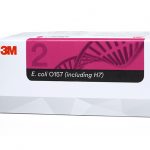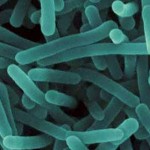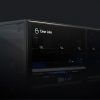Food microbiology pathogen detection technology is constantly evolving and improving for fast, efficient and accurate analysis. Thanks to the wide commercialization of easy-to-use diagnostic kits, the end-user no longer needs a deep understanding of the intricacies of diagnostic chemistries to perform the analysis. However, when navigating the selection process in search of the technology that is best fit-for-purpose, it is critical to understand the key differences in principle of detection and how they can impact both operations and risk. Here, we will explore the difference between two broad categories of molecular pathogen detection: PCR and isothermal technologies such as LAMP.
PCR & LAMP Detection Chemistries: An Overview
PCR detection chemistries have come a long way from non-specific DNA-binding dyes like SYBR Green, to highly precise sequence-specific molecular probes. The efficiency of the real-time PCR reaction today allows for the use of a variety of detection probes, the most popular being Dual-Labeled Fluorescent Probes such as FRET, TaqMan probes, and Molecular Beacon probes.1 The precision of these probes is showcased in their ability to distinguish allelic single-nucleotide polymorphisms (SNPs).2,3 The most prevalent isothermal chemistry, Loop-Mediated Isothermal Amplification (LAMP), typically does not use molecular probes due to the lack of structure and formation consistency in its amplified products. As a result, LAMP mostly relies on detection through non-specific signal generation like ATP bioluminescence or non-specific dyes. In theory, this could come from specific and non-specific amplification events. This also makes LAMP inept to detect the allelic polymorphisms, which in some cases are critical to detecting crucial variations, like between close species, and within serotypes. In the end, the detection chemistries are only as good as the amplified products.
Key Takeaways:
- PCR technology has improved greatly in detection efficiencies via target specific probes
- LAMP technology typically does not utilize specific molecular probes, but instead relies on indirect signal generation
- Target specific probes ensures signal from specific amplification events only
- Indirect signal can come from specific and non-specific amplification events, which can lead to a reduced specificity and inability to detect in certain cases
PCR & LAMP: Amplification Strategies
Food safety pathogen detection protocols aim to find the single cell of a target organism lurking in a relatively large sample. In order to achieve detection, molecular technologies utilize amplification strategies to increase the concentration of target DNA to a detectable level. Nucleic acid amplifications in both PCR and isothermal technologies start by making a variety of amplified products. These products include non-specific amplifications (NSA), and specific (target) amplifications.4,5,6,7 Ideally, the concentration of the desired target amplified product increases over time to levels above NSA where the detection chemistries are able to provide a detectable signal from the desired amplified product (target). Various reaction components such as: Target DNA concentration, polymerase, buffers and primers play a defining role in maintaining the progressive amplification dynamics, and thereby act as core contributors to the robustness of the reaction. However, none play a more crucial contribution to the success of a reaction than temperature. Herein lies a key difference between the fundamentals of PCR and Isothermal amplification technologies.
Key Takeaways:
- PCR and LAMP both make a variety of amplification products: Non-Specific (NSA) and Specific (target)
- Ideally, target products increase above the levels of NSA to reach a reliable detectable signal
- A variety of factors contribute to the overall robustness of the reaction
What Is the Difference between PCR and Isothermal Detection Technologies?
A key foundational difference between the two technologies lies in the utilization of the thermal profiles. PCR utilizes thermocycling, while isothermal does not. This difference is the tether around how the different amplification chemistries work. In PCR, the cyclical denaturation of DNA during thermocycling separates all dimers (specific and non-specific). As the reaction progresses, this leads to frequent correction of the amplification dynamics away from the NSA and favors amplification of the desired target amplifications. Isothermal chemistries do not have the ability to correct the NSA through thermocycling, so it must rely on alternate mechanisms to achieve the same result. For example, LAMP utilizes “nested” primers where the primer sequences outside the target region are used to create early amplification products. These are subsequently used as a template for the desired target amplifications. The presence of these extra primers, along with the diverse amplified structures formed during the LAMP reaction, creates many more opportunities for NSA production.5,8,9 This causes a less controlled and inefficient amplification, and is perhaps why the preheating of the DNA prior to the LAMP has shown to increase the LAMP sensitivity.10, 11 To the end user, this inefficiency can manifest itself in various ways such as restricted multiplexing, lack of internal amplification control, complex assay design, tedious sample prep methods, and increased chance for inaccurate results (i.e., false positives and false negatives).12 Scientific literature does provide a fair amount of evidence that, under controlled conditions, the isothermal amplification reaction can provide equivalent results to PCR. Isothermal chemistries also usually require simplified instruments and thereby can present interesting opportunities in non-conventional test environments with simple and predictable matrices. This likely explains the early footing of isothermal technologies in the clinical test environment as a “point of care test” (POCT) alternative. However, it must also be noted that recently PCR has also been adapted and successfully commercialized for the POCT format.13,14
Key Takeaways:
- PCR utilizes thermocycling, Isothermal does not
- In PCR, thermocycling allows for the reaction to favor the target amplification over the NSA
- LAMP must rely on alternate mechanisms to correct for NSA and these mechanisms lead to a less controlled and therefore inefficient amplification
- Under controlled conditions, isothermal technology can provide equivalent results to PCR
- Low instrumentation requirements make isothermal technologies interesting for non-conventional test environments (i.e. POCT); however, PCR has also been recently adapted as a POCT
Internal Amplification Controls in Molecular Pathogen Detection Technologies: The Value & The Challenges
The purpose of an internal amplification control (IAC) is to provide an indication of the efficacy of the test reaction chemistry. The closer the IAC is to the target DNA sequence, the better view into the inner workings of each reaction. For food microbiology testing, the role of the IAC is more important now than ever. Driven by regulations, industry self-accountability and brand protection initiatives, more food laboratories are testing diverse product types with novel and innovative formulations and ingredients. IAC capability not only helps with troubleshooting, but it also allows for a more confident adoption of the technology for new and diverse food and environmental matrices.
Over the years, PCR has progressively developed into a robust and efficient technology that can provide a dynamic IAC, giving the end user a direct look into the compatibility of the test matrix within the PCR reaction. From a single reaction, we can now make a qualitative assessment of whether the crude DNA prep from a matrix undergoing testing is working with this PCR or if it is inhibiting the reaction. With legacy technologies, including the older generation PCR’s, we were limited to an “it-did-not-work” scenario, leaving the end user blind to any insights into the reason. Since isothermal chemistries typically do not have an IAC, the end user is vulnerable to false results. Even when isothermal chemistries such as nicking enzyme amplification reaction (NEAR) can provide IAC, they typically do not mimic the target reaction and, therefore, are not a direct indicator of the reaction dynamics. This limits the end user back to the “it-did-not-work” scenario. LAMP technology attempts to mitigate the absence of IAC by performing a separate and external reaction with each test matrix. This strategy leaves the final result vulnerable to a number of factors that are otherwise non-existent for IAC: Sampling variations, reagent and machine anomalies, and user error. External control approaches also have a notable impact to the end user, as the burden to demonstrate fit-for-purpose of the method for even the smallest matrix composition change increases both validation and verification activities, which can have a notable financial impact to the laboratory.
There are a few reasons why IAC incorporation is not always plausible for isothermal technologies such as LAMP. First, inefficient, less-controlled amplification reactions leave little room for reliable and meaningful supplementary reactions, like the ones required for IAC. Second, the lack of consistent amplified products make it much more difficult to pinpoint a DNA structure that can be dependably used as an IAC. Third, lack of specific detection mechanisms makes it hard to distinguish signal from the target versus the IAC reaction.
Key Takeaways:
- Internal amplification controls (IAC) are critical for the food industry due to complex and ever-changing matrix formulations
- IAC is useful for troubleshooting, optimizing assay performance, and adapting test for novel matrices
- PCR has evolved to provide dynamic IAC, leading to increased confidence in results
- LAMP is not able to utilize IAC due to the nature of the amplification products, reaction efficiency, and lack of specific detection mechanisms
Follow the link to page 2 below.






